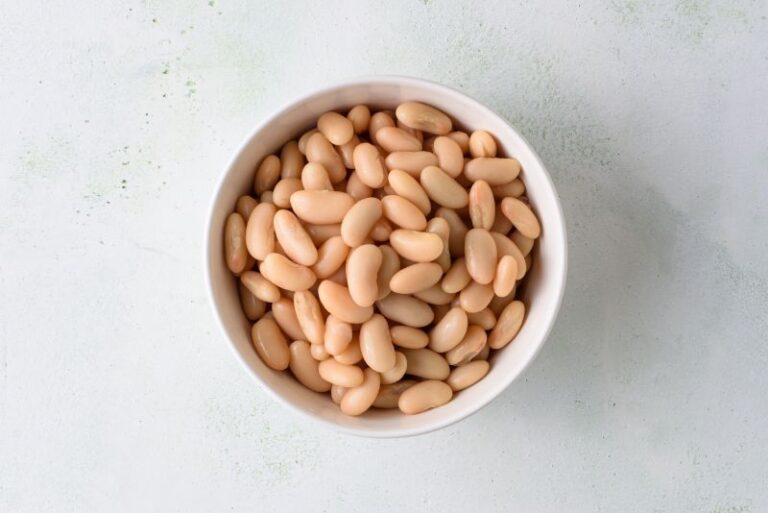How Long Does Tuna Salad Last?
Tuna salad is a classic American dish that is beloved for its simple preparation, protein-packed nutrition profile, and versatile pairing options. This zesty, savory salad can be served between pieces of bread as a sandwich, scooped up with crackers, stuffed in a hollowed-out tomato or avocado, or simply enjoyed on a bed of crisp lettuce.
With its assembled convenience, tuna salad is a popular choice to make ahead of time and keep on hand for easy lunches, snacks, or light dinners. However, since the salad contains perishable ingredients like seafood and mayonnaise, it’s important to understand proper storage methods and Pay attention to signs of spoilage.
Shelf Life of Tuna Salad
So just how long does prepared tuna salad last in the fridge before it goes bad?
According to guidelines from the USDA, a tuna salad made with canned tuna can be safely stored for 3 to 5 days if refrigerated at 40°F or below. The potential for foodborne illness increases as thedish sits longer, so it’s best to eat the salad within 3 days for optimum freshness and flavor.
The 40°F temperature is critical because it falls below the “danger zone” range of 40 to 140°F. Between these temperatures, bacteria multiply rapidly and can reach unsafe levels in just two hours. Refrigerating tuna salad at or below 40°F effectively slows the growth of these harmful microbes.
Proper refrigeration helps maintain both the safety and quality of the salad. Along with bacteria, spoilage organisms also begin to thrive as tuna salad warms and ages in the fridge. Off-odors, sliminess, and discoloration signal when the salad has passed its prime.
Fresh Tuna vs. Canned Tuna
The shelf life varies slightly depending on whether the tuna salad is prepared with fresh tuna steaks or canned tuna.
Salad made with fresh tuna has a more limited fridge life. According to the Food and Drug Administration (FDA), raw tuna or tuna steaks should be cooked or frozen within a day or two of purchase. This means any tuna salad made with fresh tuna should also be eaten within 1 to 2 days.
Canned tuna has a longer shelf life since the canning process destroys pathogens and seals out contaminants. An unopened can can last 2 to 5 years in the pantry. Once opened, canned tuna will keep 3 to 5 days in the refrigerator. Thus, tuna salad prepared with canned tuna has a fridge shelf life of 3 to 5 days from the time it was made.
For best quality, tuna salad is optimally consumed by 3 days after preparation if made with canned tuna. At 5 days, the salad is still safe to eat but may be noticeably less fresh, especially when made with lower-quality canned tuna. However, salads prepared with high-quality tuna and fresh ingredients can safely last 5 days refrigerated.
The condition and age of the other ingredients also affect the salad’s shelf life. Using older vegetables or expired mayonnaise shortens freshness. For best results, choose fresh, high-quality ingredients when making tuna salad.
Leaving Tuna Salad Out

While tuna salad can last several days in the fridge, it should never sit out at room temperature for an extended period. After just two hours at temperatures between 40°F and 140°F, the salad could become unsafe to eat.
If you won’t be finishing the entire batch of tuna salad within two hours, limit the time the dish spends out of refrigeration. When serving, only take out the portion to be eaten right away. Make separate batches for longer serve times, like parties or potlucks.
According to the USDA, no perishable food should be left out for longer than one to two hours. This rule of thumb also applies to tuna salad.
Specifically, prepared tuna salad left out for one hour is still considered safe if the room temperature is 90°F or below. At warmer than 90°F, the salad should not sit out for more than two hours before refrigeration. Again, divide into smaller containers if you won’t finish it all quickly.
Signs of Spoiled Tuna Salad
How can you tell if prepared tuna salad has gone bad before tasting it? Look for these common signs of spoilage:
- Change in color: Fresh tuna salad is light pink to creamy beige in color depending on ingredients used. Green, brown, or black spots indicate the salad has spoiled.
- Off odors: Refrigerated tuna salad will slowly lose its fresh smell. A pungent “fishy” or ammonia-like odor means the dish is no longer safe to eat.
- Storage time: No matter how carefully stored, tuna salad should be thrown out after sitting refrigerated for 5 days. Pathogens can multiply even if other signs of spoilage aren’t visible.
When in doubt, remember the old adage, “When it smells bad, throw it out!” Rely on your senses of sight, smell, and time to determine if your tuna salad has exceeded its prime.
Freezing Tuna Salad
Freezing is another storage method for prepared tuna salad. Properly frozen, the salad will maintain food safety indefinitely, but its texture and flavor will decline in quality over time.
Here are some freezing tips for tuna salad:
- Mayonnaise can curdle and separate when frozen. Start with a recipe less reliant on mayo for best results.
- Crisp vegetables like celery and onions will soften during freezing. Chop them smaller before mixing into the salad.
- Portion the salad into airtight, freezer-safe containers, leaving headspace to allow for expansion. Flatten packages for quicker thawing.
- Label and date packages. Use frozen tuna salad within 2 months for optimal flavor and texture.
- Thaw in the refrigerator overnight before serving. Do not thaw at room temperature or in hot water.
With proper freezing technique, you can enjoy your homemade tuna salad for months past its initial refrigerator shelf life.
The Takeaway
Tuna salad can be a go-to lunch recipe, but it requires attentive storage. Follow these guidelines to keep your tuna salad fresh and safe:
- Consume tuna salad with fresh tuna within 1-2 days. With canned tuna, eat within 3 days for best quality and up to 5 days for food safety.
- Discard tuna salad left out more than 2 hours, or 1 hour if temperature exceeds 90°F.
- Check for odd colors, smells, and slime that signal spoilage. When in doubt, throw it out.
- Freeze portions for longer storage. Thaw overnight in the fridge before serving.
By properly storing and freezing your homemade tuna salad, you can safely enjoy this classic dish for lunches all week long. Follow these simple rules and recommendations from the USDA and FDA, and your tuna salad will maintain both fresh taste and food safety.






